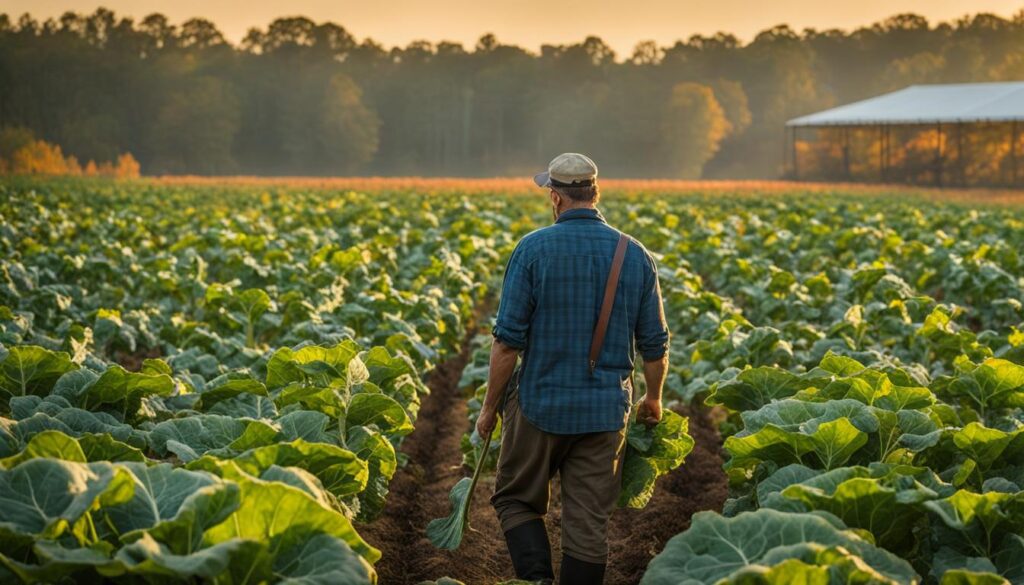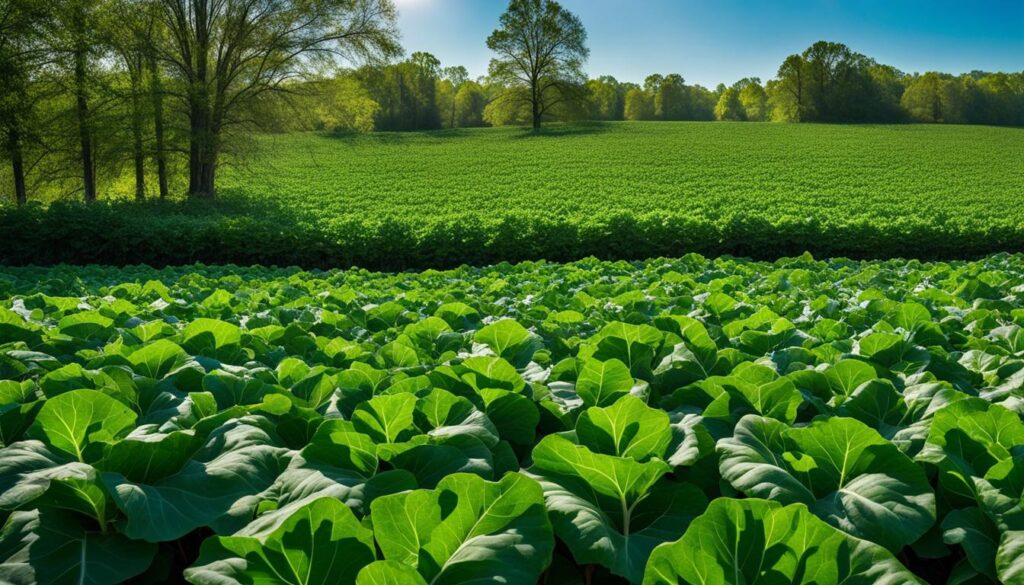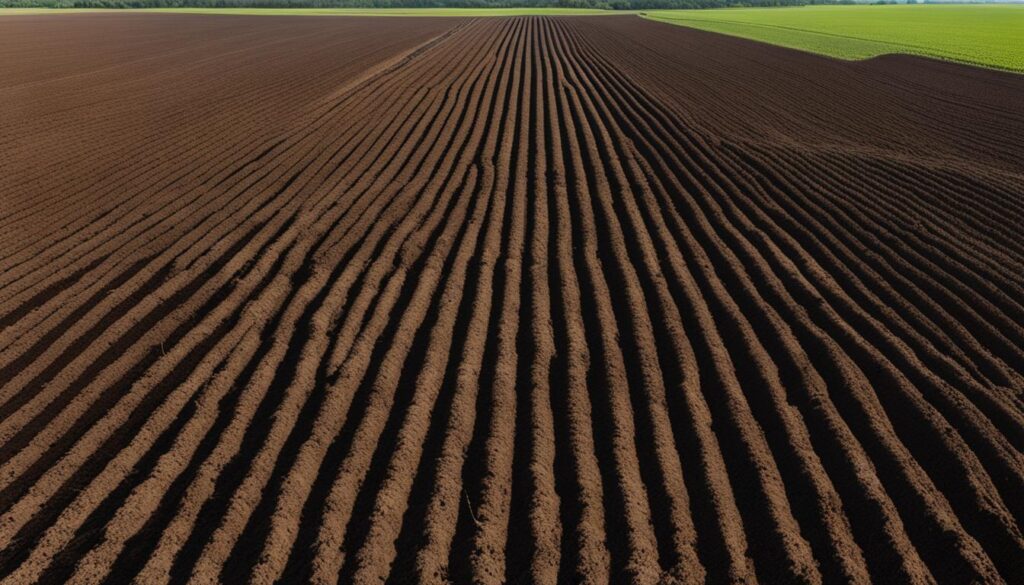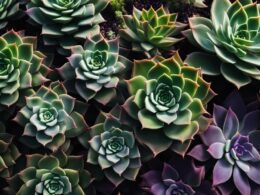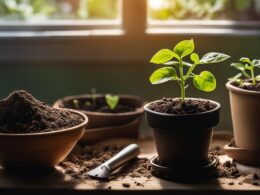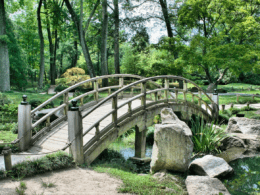Collards, a delicious and nutritious part of South Carolina cuisine, can be successfully grown throughout the year in the state’s distinct regions. Knowing the right time for planting collards in South Carolina is crucial to producing a harvest capable of withstanding light to medium freezes and frost. Whether you live in the Piedmont or Coastal areas, understanding the specific collard greens planting season in SC will help you take advantage of this versatile vegetable. This guide will provide you with steps for successful cultivation, ensuring your garden is stocked with healthy collard greens when you need them.
Key Takeaways
- Collard greens can be grown year-round in South Carolina, with early spring and fall being optimal planting seasons for both the Piedmont and Coastal regions.
- Piedmont’s preferred planting dates range from March 15 to June 30 for spring and August 1 to September 30 for fall.
- Coastal South Carolinians should target planting dates between February 1 and June 15 in spring, and August 1 to October 30 in fall.
- It’s important to select appropriate collard varieties and follow proper planting strategies for each region to ensure a healthy harvest.
- Soil pH, fertility, and proper care are crucial factors affecting the success of collard greens.
Understanding South Carolina’s Collard Planting Seasons
Collards are versatile and resilient, thriving in South Carolina’s varied climates. The state’s two distinct gardening regions, the Piedmont and the Coastal area, each have their preferred planting dates for spring planting collards and fall planting collards.
The Piedmont region’s recommended planting dates range from March 15 to June 30 for spring and from August 1 to September 30 for fall. For Coastal South Carolinians, the spring planting window falls between February 1 and June 15, while the fall planting window ranges from August 1 to October 30.
Understanding South Carolina collard seasons is essential for gardeners who wish to cultivate a bountiful harvest in either the Piedmont or Coastal regions of the state. Having knowledge of the unique climatic factors and regional conditions helps ensure that collard greens flourish throughout the year.
Below is a comprehensive breakdown of the collard planting seasons in the Piedmont and Coastal regions of South Carolina:
| Region | Spring Planting Dates | Fall Planting Dates |
|---|---|---|
| Piedmont | March 15 – June 30 | August 1 – September 30 |
| Coastal | February 1 – June 15 | August 1 – October 30 |
When selecting collard varieties for planting, it is crucial to choose those that suit the specific growing conditions of the chosen region. By doing so, you can ensure the healthiest, most flavorful collards that continue to thrive in the shifting South Carolina collard seasons.
Choosing the Right Time for Planting Collards in the Piedmont Region
South Carolina’s Piedmont region offers unique conditions for growing collards, making it crucial to choose suitable varieties and follow proper planting techniques. This section outlines the optimal choices for spring planting and fall transplanting to ensure a successful harvest of collards in Piedmont SC.
Selecting Collard Varieties for Spring Planting
When it comes to spring collards Piedmont SC, opt for bolting resistant collards to avoid premature flowering. Recommended choices include hybrid varieties like Blue Max and Flash and heirloom varieties such as Georgia Southern and Morris Heading.
- Blue Max: A hybrid cultivar with high yield potential and bolt resistance.
- Flash: Another hybrid collard prized for its fast growth and bolting tolerance.
- Georgia Southern: An heirloom variety dating back to the late 1800s, well-suited for spring planting.
- Morris Heading: A unique, non-heading collard with tender leaves and a rich flavor.
Start seeds indoors 6-8 weeks prior to planting to circumvent slow germination in cool soil, and transplant when the time is right.
Key Considerations for Fall Transplanting Dates
For the fall, planting using collard transplant varieties is advantageous for the Piedmont zone. The soil is warmer at this time, boosting direct seeding success. Proper hydration is essential for young seedlings, making sure to place seeds at a depth no greater than ½ inch. Recommended spacing is 6 to 18 inches apart in rows that are 18 to 36 inches apart.
Table 1 presents an overview of select fall collard varieties suitable for transplanting in Piedmont SC.
| Collard Variety | Description |
|---|---|
| Vates | A non-heading collard variety known for its large, tender leaves and cold-hardiness. |
| Champion | A smooth-leaf, bolt-resistant collard with a relatively fast growth rate. |
| Top Bunch | A hardy, bolt-tolerant collard with high yields and excellent flavor. |
| Yellow Cabbage Collard | A regional favorite characterized by its light green, tender leaves and milder flavor. |
By selecting the appropriate collard varieties and adhering to the recommended planting practices for the Piedmont region, you can ensure a thriving and abundant harvest of flavorful collards.
Optimal Planting Strategies for Coastal South Carolina
In the Coastal Plain region of South Carolina, collard greens can be thrivingly grown by employing the right planting techniques. By understanding the ideal planting seasons specific to this area, gardeners can achieve a flourishing harvest.
Direct seeding of collards is a suitable approach in Coastal South Carolina. The prime months for a bountiful fall crop are July and August. If you prefer spring planting, late February to mid-March is an appropriate window to ensure the highest yield of collard greens.
Alternatively, using transplants is also an efficient option for Coastal SC gardening enthusiasts. No matter the season, proper soil fertility and spacing are essential. When planting collards, maintain a distance of 18 inches between the plants. This enables collard greens to not only serve as an attractive feature in the landscape but also as an edible addition to your garden.
When considering the soil types in Coastal South Carolina, remember that collards thrive in well-draining soil with pH levels of 6.0 to 6.5. Preparing the soil well in advance of planting and utilizing the proper planting techniques can significantly contribute to the success of your collard greens harvest.
Seasonal Collard Planting Tips
- Select bolt-resistant collard cultivars to ensure a flourishing harvest.
- For spring planting, sow seeds directly or transplant seedlings when the soil temperature is above 50°F.
- For fall planting, sow seeds directly in July or August, or transplant seedlings from late August to September.
By following these seasonal collard planting guidelines, gardeners in Coastal South Carolina can yield a bountiful harvest of collard greens throughout the year, showcasing their versatility and resilience in the region.
The Significance of Soil Conditions and Cultivar Selection
Creating the optimal environment for growing collard greens involves meticulous attention to soil conditions and selecting the right cultivars for the region’s unique climate. A soil pH level of 6.0 to 6.5 is ideal for supporting healthy growth and maintaining fertility, while choosing bolt-resistant collard cultivars ensures a more productive harvest. In this section, we will investigate key factors and cultivar options for a robust collard crop in South Carolina.
Identifying Bolt-Resistant Collard Cultivars
Understanding the requirements of specific collard cultivars is critical when selecting the right variety for your garden. The ultimate goal is to identify bolt-resistant cultivars that will thrive in both South Carolina’s Piedmont and Coastal regions.
| Collard Cultivar | Characteristics |
|---|---|
| Champion |
|
| Georgia Southern |
|
| Blue Max and Flash |
|
| Morris Heading |
|
Once the soil conditions have been optimized and a suitable collard cultivar is chosen, your SC collard selection will benefit from the most favorable environment for growth. Don’t forget to follow other best practices such as adequate fertilization and timely watering. With the right care and attention, your South Carolina collard greens will be a tasty and bountiful harvest!
Best Practices for Collard Care: From Fertilization to Watering
To ensure a bountiful harvest of collard greens, it’s essential to follow the best practices in caring for the plants. Proper fertilization and watering techniques can significantly impact the health and yield of your collards. In this section, we’ll provide guidance on fertilizer application and watering recommendations for healthy collard growth.
Fertilizer Application for Healthy Collard Growth
Collards require well-balanced fertilization to achieve optimal growth. Based on soil test results, aim for a pH level between 6.0 and 6.5 and incorporate preplant fertilizer into the soil. To facilitate lush leaf production and prevent root burn, a side dressing of calcium nitrate should be applied a few weeks after planting. The suggested application is 5 pounds per 1000 square feet, but adjust the amount for smaller garden spaces accordingly.
For gardeners seeking organic options, there are several organic collard fertilizers available. A combination of compost, aged manure, and organic matter can support healthy collard growth while naturally enriching the soil. To help you decide, consider this comparison of organic and inorganic fertilizer options:
| Type | Pros | Cons |
|---|---|---|
| Organic Fertilizers (e.g., compost, aged manure) | Environmental benefits, improved soil structure, and long-lasting nutrient release. | Slower nutrient release, may require larger quantities, and potential odor issues. |
| Inorganic Fertilizers (e.g., calcium nitrate) | Fast release of nutrients, precise control of nutrient application, and cost-effective methods. | Potential for nutrient runoff, potential impact on soil quality, and less environmentally friendly. |
Watering Techniques to Maintain Collard Vigor
To maintain vigorous collard growth and prevent wilt, ensure a consistent moisture level, moistening the soil to a depth of around 6 inches. Watering early in the day can minimize the risk of foliar diseases. During stand establishment and crop maturation, pay special attention to maintaining soil moisture. Additionally, mulching can help with water conservation and weed control.
To properly care for your collard greens, follow these watering guidelines:
- Water early in the day to minimize evaporation and discourage foliar diseases caused by prolonged moisture on the leaves.
- Maintain soil moisture by watering consistently, and consider installing drip irrigation or using a soaker hose to provide more even water distribution.
- Allow the top 1-2 inches of soil to dry slightly between waterings to prevent excessive moisture in the root zone.
- Mulch with organic materials, such as compost, straw, or chopped leaves, to help conserve soil moisture, suppress weeds, and maintain soil temperature.
By incorporating these collard fertilization best practices and watering techniques, you can ensure the healthiest possible growth of your collard greens, resulting in a bountiful harvest perfect for your culinary needs.
Are the Planting Times for Collards in South Carolina and Georgia the Same?
Yes, the planting times for collards in South Carolina and Georgia are generally the same. It is best to plant collards in Georgia and South Carolina in early spring or late summer for a fall harvest. The mild climate in both states allows for a longer growing season for planting collards in Georgia.
Conclusion
By focusing on timing, soil preparation, variety selection, fertilization, and watering, you can achieve a successful collard harvest in South Carolina. This South Carolina collard green guide shares valuable advice that caters to both the Piedmont and Coastal regions, ensuring a bountiful production of this versatile and traditional Southern vegetable.
Collard growing tips provided throughout this article emphasize the importance of selecting bolt-resistant cultivars, maintaining proper soil conditions, and adopting appropriate fertilization and watering techniques. With dedication and careful attention, you can raise a hearty, flavorful collard crop that highlights the unique culinary applications of these popular greens.
By implementing the strategies shared in this guide, you will be well on your way to enjoying a fruitful collard harvest in South Carolina. Embrace the state’s diverse growing conditions and cultivate your very own thriving collard garden, expanding your culinary repertoire with the satisfying, nutrient-rich taste of this beloved classic.






